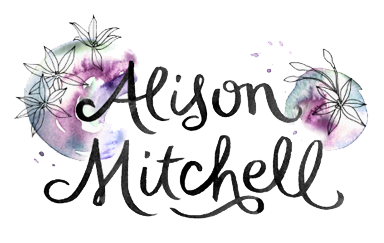Foods to stop BLOATING and FARTING: Fermented Foods
Guest post by Lisa Costa Bir
Ever wanted to tame the microbes in your gut?
 You’re not alone. Complaints such as bloating, irritable bowel and flatulence are very common in my clinic. Thanks to a certain television ad, most of us are aware that having the right balance between the ‘good’ and the ‘bad’ bacteria in our gut (stomach and intestines) is highly important for overall health and well being. You may also be aware that antibiotics, the oral contraceptive pill, chlorine in our drinking water and factors such as stress can interfere with levels of good bacteria in the gut. Antibiotics are particularly problematic because they do not discriminate between the good and the bad bacteria in the gut, killing indiscriminately.
You’re not alone. Complaints such as bloating, irritable bowel and flatulence are very common in my clinic. Thanks to a certain television ad, most of us are aware that having the right balance between the ‘good’ and the ‘bad’ bacteria in our gut (stomach and intestines) is highly important for overall health and well being. You may also be aware that antibiotics, the oral contraceptive pill, chlorine in our drinking water and factors such as stress can interfere with levels of good bacteria in the gut. Antibiotics are particularly problematic because they do not discriminate between the good and the bad bacteria in the gut, killing indiscriminately.
Following antibiotic use or if there are general gut symptoms such as bloating or diarrhoea, many people turn to probiotic supplements to help restore levels of good bacteria in the gut. While this is advisable, in my opinion just taking probiotic supplements in isolation is not enough, particularly when we consider that most probiotic supplements only contain 2-10 species / strains of ‘good bacteria’, yet over 400 bacterial species have been identified in our gut.
The right amount of good bacteria is important for healthy intestinal absorption and digestion of nutrients, and also for enhancing the immune system as up to 70% of the immune system is actually found in the gut. A healthy gut has been shown to decrease prevalence of allergy in susceptible individuals. The gut is also the site of much of the production of serotonin, the neurotransmitter responsible for a good mood, so if your gut is not functioning well, your mood may well be affected. Clearly good gut health is important, so how do we get the balance of good bacteria back into the gut if our intestinal health is not what it should be?
Fermented & cultured foods
Fermented foods (i.e. foods containing naturally occuring healthy bacteria) offer a delicious and nutritious way to get the good bacteria back into your gut. This is because they are a great source of naturally occurring probiotics. Fermented foods are not a new fad; they have been used for centuries as daily nourishment in many countries including India, Japan, Vietnam and Africa. Many people report less bloating, gas, fatigue and bowel issues after using fermented foods. Examples of fermented foods with naturally occurring probiotics include live yogurt, kefir, sauerkraut, kimchee, kombuscha, and soybean-based miso and natto.
Fermentation in food describes the process of lacto fermentation, where naturally occurring healthy microorganisms such as the lactobacillus bacteria feast on sugars and other carbohydrates in foods, creating lactic acid as a by-product. The growth of these bacteria in fermented foods affects the composition and function of the bacteria in the gut in many different ways. Their presence not only increases the digestibility of food, they can also increase the nutritional content of the food, for example, vitamin C is more bio-available in fermented cabbage than fresh cabbage.
Fermented foods offer a fantastic way to:
(1) Increase the variety of healthy bacterial strains in the gut;
(2) Increase the quantity of healthy bacteria in the gut, particularly if you feed the probiotics ‘prebiotic’ foods (more on prebiotics below); and
(3) Discourage the presence of the bad bacteria that cause bloating and other gut related symptoms.
Prebiotics promote the growth of good bacteria in the gut as they function as a food source for the probiotic. Prebiotics are things such as inulin and fructooligosaccharides (FOS). You can find these prebiotics in foods such as asparagus, Jerusalem artichokes, bananas and shitake mushrooms.
For best results with improving gut health use fermented foods on a daily basis. My top three fermented/cultured foods (in no particular order) are:
1. Kefir
Kefir is a fermented milk drink that tastes similar to natural yogurt. It is one of my favourite fermented foods as not only does it contain high levels of probiotics, it also contains prebiotics such as inulin, which act as a food source for the good bacteria and ensures the probiotics multiply.
My favourite brand of Kefir is the Babushka brand, which you can find at good health food stores. As well as containing high levels of healthy cultures/bacteria (approx 12 billion CFU [colony-forming units] per shot), Kefir is also delicious and perfect for kids as it comes in kid-friendly flavours such as strawberry and honey. Despite the fact that it is a dairy product, it is actually very helpful for those with lactose intolerance. Studies have shown that lactose intolerant adults drinking kefir either eliminated or drastically reduced symptoms related to lactose intolerance. It is believed that the healthy bacteria in kefir possess the enzyme that is necessary to digest lactose.
2. Miso paste
Miso paste is a fermented food that contains healthy bacteria similar to that found in our gut. The healthy bacteria grow during the fermentation process of miso. Always choose unpasturised miso as pasturisation kills the good bacteria.
My favourite brand is Spiral foods. Care should be taken not to boil the miso as this destroys the cultures/bacteria. Add it at the last moment to a soup in place of stock or use cold as part of a salad dressing.
3. Fermented vegetables
Fermented vegetables have been used for centuries. Sauerkraut is a fantastic example of an Eastern European fermented food that many of you will be familiar with. Fermentation by lactobacilli cultures occurs naturally in Sauerkraut as the healthy lactobacilli bacteria multiply on raw cabbage leaves where they grow. Lactobacilli are not the only culture to be found, leuconostoc and pediococcus have also been noted.
When it comes to sauerkraut you are best making your own rather than buying it from a supermarket as quality can be an issue (plenty of recipes exist on the internet). Supermarket versions tend to pickle the cabbage in vinegar, unlike traditional methods which favour just water and sea salt. Water and sea salt is preferable as unlike the vinegar, it promotes growth of healthy bacteria cultures. If you do want save time and just buy some fermented vegetables then my favourite brand is by Life in a jar http://www.lifeinajar.com.au.
I couldn’t miss the opportunity to highlight kimchee, a traditional Korean probiotic-rich food similar to the sauerkraut described above. It is comprised of an assortment of fermented vegetables (usually cabbage, carrot and cucumber) and like the sauerkraut above, the vegetables are fermented over a long period, which ensures growth of probiotic cultures for gut health. If you ever go to a Korean restaurant, be sure to order some kimchee.
Many places now offer classes that teach you how to make fermented vegetables and offer tips on how to add these to your daily meals. Examples include BU Organics in Bondi Junction, partly run by my favourite chef Pete Evans where they teach you how to make cultured vegetables and coconut kefir, yum! If you are interested in reading more on the benefits of fermented and cultured foods check out the book Nourishing Traditions by Sally Fallon as she dedicates a whole chapter to them and includes some lovely recipes.

Lisa Costa Bir – Naturopathic nutritionist, Ayurvedic lifestyle consultant, Lecturer & Food Coach web content coordinator
B App Sc. Naturopathy, Grad Dip. Naturopathy
Lisa maintains a practice in South Sydney and lectures at Endeavour College of Natural Therapies.
Connect with her on facebook under ‘Lisa Costa Bir Naturopath’ or check out her site at www.lisacostabirnaturopath.com.au
[fb_button]










